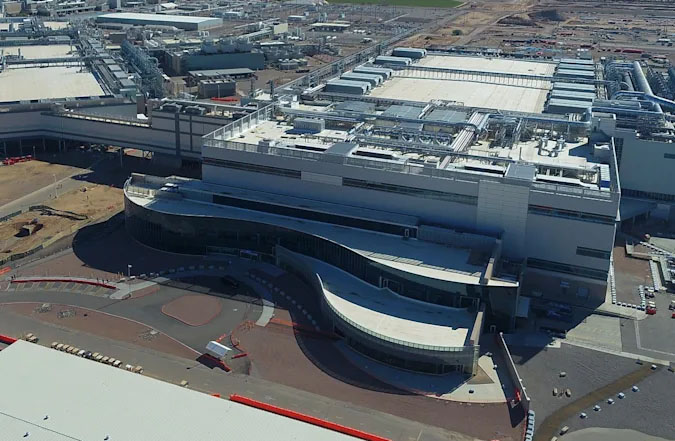Intel Plans on Delivering 7nm Chips by 2023 From Its New Arizona Factories

Pat Gelsinger, Intel’s new CEO. is taking ramping up the company’s engineering capabilities seriously. Today, he announced the company’s ‘IDM 2.0’ strategy during a press conference. This move will see the company investing over $20 billion dollars in two Arizona fabrication facilities.
If this works out, it is going to make Intel much stronger when it comes to making chips. Also, Gelsinger announced that Intel’s first 7nm chip will be finished with the design phase within the next few months. So, that means that 7nm CPUs won’t be coming from Team Blue until some time in 2023.
Intel is the only company with the depth and breadth of software, silicon and platforms, packaging, and process with at-scale manufacturing customers can depend on for their next-generation innovations. IDM 2.0 is an elegant strategy that only Intel can deliver – and it’s a winning formula.
Pat Gelsinger – Intel CEO
Surprisingly, Gelsinger started the presentation with the acknowledgment of his company’s struggle in producing chips smaller than 10nm. Now, he says Intel will (finally) use EUV (Extreme Ultraviolet Lithography) using a new production method. This investment is huge, sure, and yes it will help Intel make its chips, but this move alone is not going to be enough for Intel to move to 7nm. The once-influential company will certainly need help from other foundries to build its 7nm chips like Meteor Lake and Granite Rapids. This is because after decades of the taurus-and-the-hare approach, Intel no longer has the design talent to run its business and is left grasping at straws to maintain industry relevance.
As part of Intel’s grasping-at-straws attempt to be a fabrication giant, it has created a new segment called Intel Foundry Services. It’s a service where you can trust your mission critical integrated circuits to a company that has a decades-long proven track record of abject failure. Gelsinger tried to provide assurance by stating that IFS will be run as its own business unit, but that really doesn’t mean anything. It’s either a company that can’t make chips promising to make your chips or its a company that can’t make chips promising to make another company that will be able to make chips. I mean, come on.
Intel is back. The old Intel is now the new Intel as we look forward to the future.
Pat Gelsinger – Intel CEO
The old Intel is back, and we’ll all remember the Pentium 4.
Joe Everett



